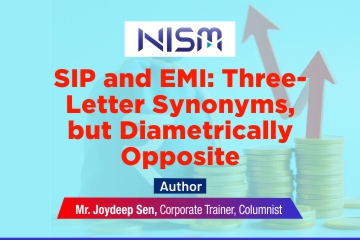
Fixed Income investments: strategic and tactical
Investments can be bucketed as per your time horizon; sometimes you may do a tactical allocation
The USP of the fixed income allocation of the portfolio is stability in overall portfolio performance, leading to better risk-adjusted returns. Depending on your objectives, risk appetite and investment horizon, you allocate to fixed income. The allocation may be on the lower side, say 20 percent of your portfolio, for young investors with a long horizon or on the higher side, say 80 percent, for retired senior citizens.
That is the strategic allocation to fixed income. Tactical allocation is tweaking the allocation little higher or lower as per the market situation. Sometimes there is a mispricing in the market or there is a certain view on interest rate movement, based on which you can tweak your allocation.
Strategic allocation – bucketing
There is a structure in fixed income investments, with the help of which you can dovetail your investments as per you cash flow timings. Bonds have a defined maturity, which is not the case with equity stocks. On the maturity of a bond, you get the contracted amount, irrespective of market movement at that point of time. When you are investing in a bond of say 2 years or 5 years maturity, and you require the cash flow after 2 or 5 years, it is called laddering. You can construct a portfolio with bonds of various maturities to suit your requirements.
Laddering can be done through Mutual Funds as well. In an open-ended MF scheme, the fund is perpetual, unlike the maturity of bonds. However, there is a portfolio maturity of the fund, which is the weighted average maturity of all the bonds / instruments in the portfolio. The portfolio maturity of the fund gives you a ballpark idea on the appropriate investment horizon. There are 16 debt fund categories as defined by SEBI. All these funds have their portfolio maturity range either as defined by SEBI or as mandated by the AMC itself within the guidelines.
For purposes of understanding this concept of matching your time horizon with the portfolio maturity of the fund, as an illustration, in Liquid Funds, the maturity is less than three months; you can come in for a time horizon of one week to two-three months. Ultra Short Term Funds have portfolio maturity in the range of three to six months; your horizon can be three to six months. At the other end of the spectrum, there are Gilt Funds. The portfolio maturity in Government Security Funds is the longest; your horizon should be at least five years, preferably ten years. The portfolio maturity of the debt fund you are looking at, can be found in the monthly factsheets. The factsheets are published every month, on the website of Mutual Funds.
Tactical allocation
The concept of tactical allocation is, marginally increasing or decreasing the allocation to an asset class e.g. equity or debt, as per the prevailing market conditions. The meaning of market condition is, in case or equity, valuation levels. In case of debt, it means expected movement of interest rates and prevailing yield levels. Prevailing yield level means the yield levels on various bonds or instruments in the market at that point of time.
Bullish view or positive view on interest rates implies interest rates / yield levels coming down; bond yields and prices move inversely. If the call comes correct, you benefit as prices of your existing holdings move up. Bearish view is when interest rates are expected to move up; you may pare your debt exposure at the margin. Sometimes, there are mis-pricings and yield levels on certain instruments may be attractive. That makes a case of increasing your allocation a little bit.
Current situation
Yield level on government bonds have moved up, even after the RBI having reduced repo rate by 1 percentage point. 10-year benchmark G-Sec yield has moved from 6.25 percent in May 2025 to 6.5 percent now. Yield on longer-dated G-Secs, say 20 or 30 year maturity, have moved up much more over the last few months than shorter-dated ones, say one-year maturity.
The salient aspect of the current situation is yield on State Government Securities (SGS) / State Development Loans (SDLs). SGS are sovereign instruments, as defined by the Reserve Bank of India (RBI). Yield level on SDLs are higher than that of Central Government Securities, as the fiscal profile of States are weaker than the Centre. Nonetheless, yield level of SGS are usually lower than AAA rated corporate bonds, as these are sovereign at the end of the day. Currently, due to some technical reason, yields on SDLs have moved up, and are even higher than good quality AAA rated corporate bonds. This is a mispricing you can avail of.
Yields on corporate bonds have inched up recently, again due to technical reasons. Hence if you are entering corporate bonds now, you have a relatively better entry level than a few months ago.
View going forward
The rate cut cycle of the RBI seems to have come to an end; there is a small chance of one last rate cut if inflation gives a positive surprise. From that perspective, not much of rally is expected in bonds. Having said that, on a sudden positive news-flow or some technical reason, yields can potentially trace back. Any which way, if your yield level at the time of entry is relatively higher, you are that much better off.
Methods of entry
There are multiple ways you can take exposure; broadly two means: direct and through an investment vehicle. For direct investment in Government Securities and SGS, there is RBI Retail Direct (RBI RD), which can be accessed at https://rbiretaildirect.org.in/. You can invest in Central Government Securities and State Government Securities. This facility is available only to individuals, not corporates. You just have to open your account there, rest all the process requirements (demat, banking etc.) are taken care of by RBI itself. For direct entry into corporate bonds, there Online Bond Platform Providers (OBPPs), who make their inventory of bonds available on their website.
There are investment vehicles like Mutual Funds (MFs), Portfolio Management Services (PMSs) and Alternative Investment Funds (AIFs). The more popular vehicle is MFs, due to low ticket size, accessibility and liquidity. The particular mis-pricing opportunity mentioned earlier – SGS / SDL – can be availed of either directly through RBI RD or through MFs. If you want liquidity, MFs are better; you have to identify the particular funds that have exposure to SDLs. There are Target Maturity Funds that have exposure to SDLs, and certain other funds with SDL-oriented portfolios.
You can compare the rate offered by leading Banks on fixed deposits with the yields available on Central or State Government Securities, which are a better credit than Banks.
Originally Published in Outlook Money October 2025 Issue.
Author: Mr Joydeep Sen, Corporate Trainer

With a host of opinions and views floating around, it is important to make your own estimate Context Nowadays, you…

When we think of investments in Mutual Funds, we think of investments in schemes i.e. products offered by Mutual Funds.…

SIP and EMI: three-letter synonyms, but diametrically opposite You are king of your money or slave to your expenses SIP…
© 2025 National Institute of Securities Markets (NISM). All rights reserved.